| HOME |
|---|
PEGASUS
The Winged Horse
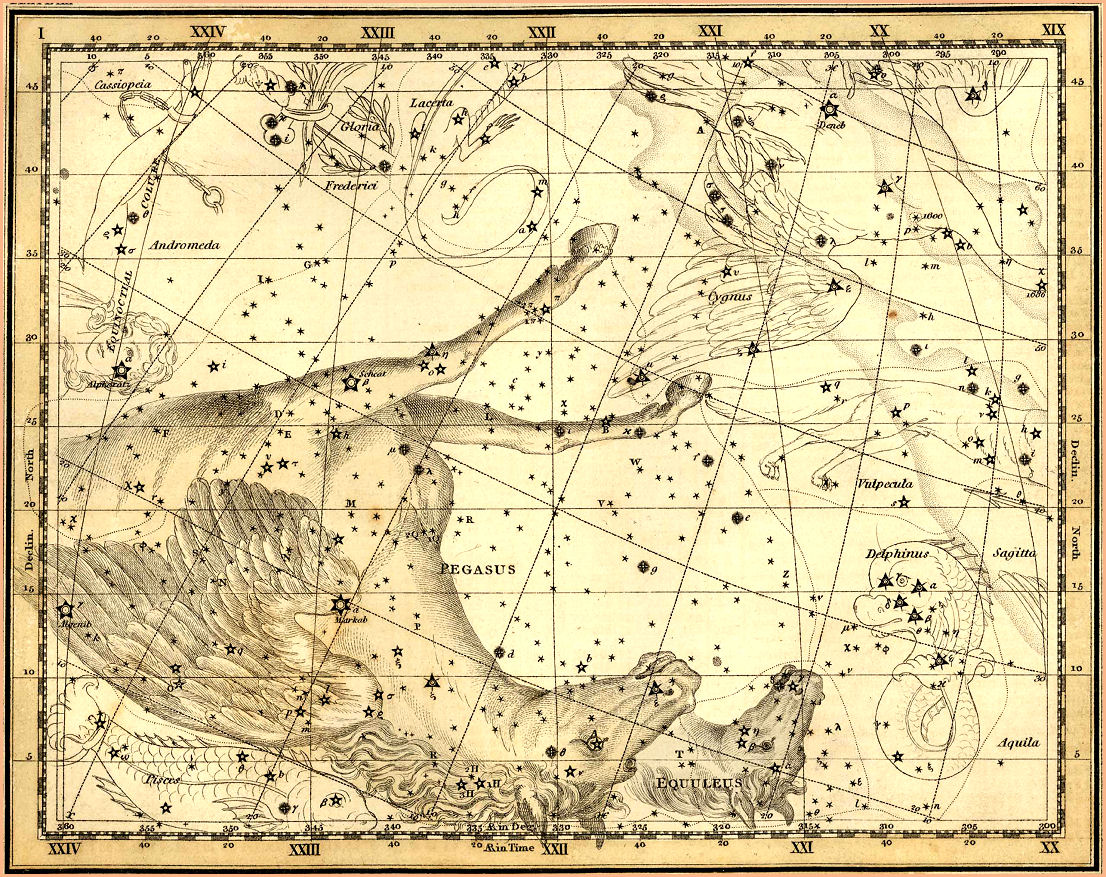
Pegasus - Celestial Atlas by Alexander Jamieson - 1822
| HOME |
|---|

The great winged horse, Pegasus, is one of the most ancient of astronomical symbols, with coins depicting his image dating back to 430 BC. In Greek myth, the Pegasus story begins with Poseidon (Neptune), god of the sea, seducing a beautiful princess by the name of Medusa, in the temple of Athena. Outraged by this desecration of her temple, the goddess Athena turned Medusa into a monster, changing her beautiful head of golden hair into a hideous mass of writhing snakes. When Medusa was slain by the hero Perseus, Pegasus, the result of her fateful union with Poseidon, sprang from her body as she died.
After helping Perseus rescue Andromeda, a tale told in the Andromeda story, Pegasus flew to Mount Helicon to live with the Muses. When his hoof struck the ground at Helicon, a spring gushed forth, which was named Hippocrene, the horse's fountain. It is said that it was from this spring the Muses received their inspiration, and the name of Pegasus comes from the Greek "pegai," for spring.
Pegasus was next tamed by the Greek hero Bellerophon, with the help of a golden bridle given to him by Athena. Together they slew the monster Chimera, and then Bellerophon tried to fly the horse to Mount Olympus, to be with the gods. Angered by his mortal arrogance, Zeus (Jupiter) sent a gadfly to bite Pegasus, who bucked, causing Bellerophon to fall back to Earth, which crippled him for the rest of his life. Pegasus, however, continued on to the home of the gods, where his hooves thundered across the sky dispensing the lightning bolts of Zeus. In honour of his faithful service, his image was placed in the stars.
Like the constellation Hercules, Pegasus is upside down in the sky, and like Taurus, only shows the animal's head and upper body. The torso of the horse is represented by a large square of bright stars known as the Great Square of Pegasus, which has become a landmark of the autumn sky.
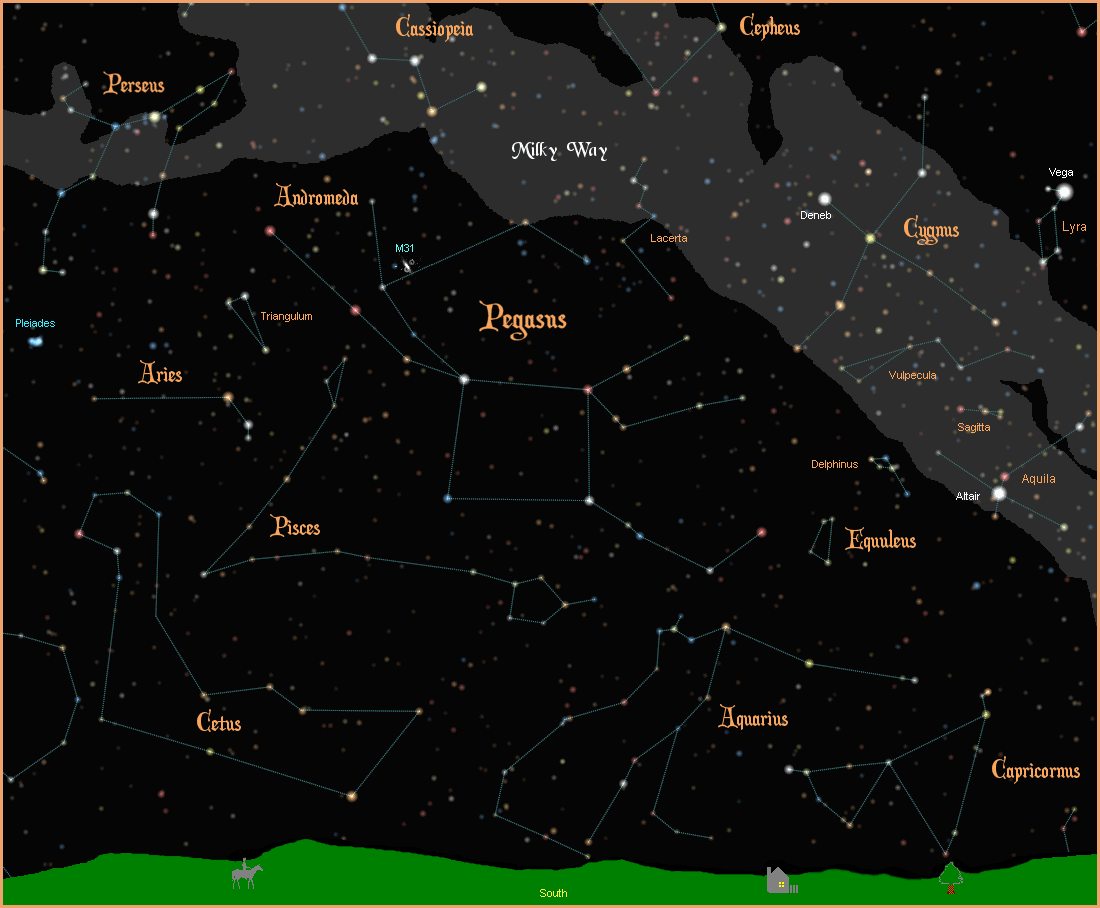
The brightest star in the Great Square of Pegasus doesn't even belong to Pegasus. It used to, and still retains the name Alpheratz, from the Arabic for navel of the horse, but since it sits right on the Pegasus/Andromeda border, it was ultimately given the designation Alpha Andromedae, and placed in the custody of the princess. It is sometimes nostalgically referred to as Delta Pegasi.
The second brightest star in the square is Alpha Pegasi, named Markab, Arabic for saddle. Markab is an A1IV blue/white subgiant, about 110 light years away, with a magnitude of 2.49.
With a very slightly higher magnitude of 2.44 is Beta Pegasi, named Scheat, Arabic for foreleg. It is an M3III red giant, about 200 light years away.
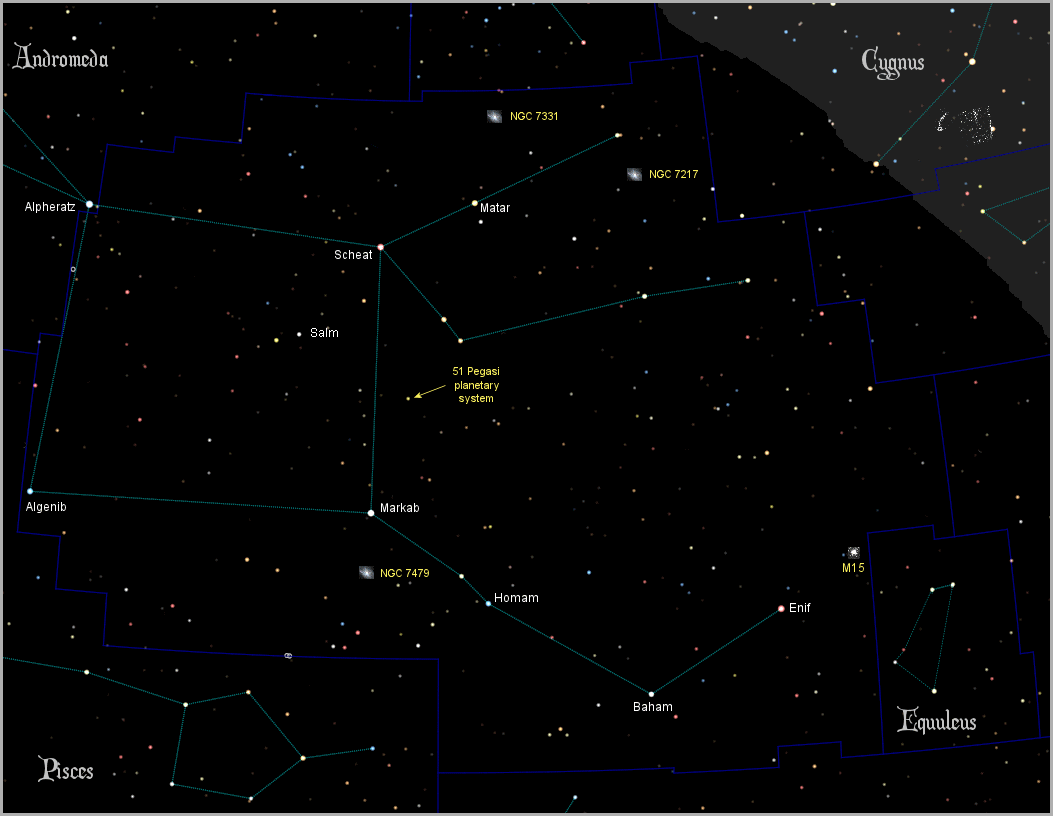
The final star forming the Great Square of Pegasus is Gamma Pegasi, named Algenib, Arabic for wing, or side. Although it has a luminosity 1,900 times greater than our Sun, we see it as only magnitude 2.8, because it is 570 light years away. It is a B2IV blue subgiant.
Moving away from the big square out to the horse's muzzle, we have Epsilon Pegasi, with the name Enif, Arabic for nose,. It is a K2I orange supergiant, 5,800 times brighter than our Sun, even at the great distance of 780 light years shining at magnitude 2.31, making it the brightest star in the constellation.
In the neck of the horse we find Zeta Pegasi, named Homan, taken from the Arabic phrase "Sa'd Al Humam", lucky star of the hero. It is a B9IV blue/white subgiant, about 210 light years away, with a magnitude of 3.41.
Down in the front leg of Pegasus is Eta Pegasi, named Matar, from the Arabic phrase "Al Sa'd al Matar," the fortunate rain. It is a binary system, with a G2III yellow giant and an F0V yellow/white main sequence star in a close 813 day orbit around each other. They are about 215 light years away with a combined magnitude of 2.93.
On the head of the horse we have the third "lucky star" of Pegasus, Theta Pegasi, with the name of Baham, from the Arabic "Sa'd Al Bahaim," good luck of the beasts. It is an A1V white main sequence star, about 92 light years away with a magnitude of 3.52.
Finally, back inside The Great Square of Pegasus, we have Tau Pegasi, with the name Salm, Arabic for the leathern bucket, going back to a time when the square was thought of as a well. It is a A5V white main sequence star, about 366 light years away with a magnitude of 3.97.
Pegasus has the distinction of containing the first exoplanet discovered around a normal, main sequence star. The first three exoplanets that were discovered in 1992 and 1993, were in orbit around pulsars, which are very unfriendly stars. A pulsar is a highly compressed, rapidly spinning core remnant of a supernova explosion. The intensity of a pulsar's radiation and magnetic field pretty much precludes the possibility of life developing anywhere near it.
But in 1995 a fourth exoplanet was found, this one in orbit around a normal G2V yellow main sequence star very much like our Sun, in the constellation Pegasus. The star is 51 Pegasi, only 50 light years away, and with a magnitude of 5.49, visible to the naked eye. The planet is named 51 Pegasi b. It is about half the size of Jupiter and orbits very close to its parent star, making it exceedingly hot and presumably hostile to any kind of life as we know it. The planet was unofficially named Bellerophon, after the Greek hero that rode the mighty Pegasus in battle against the monster Chimera.
Since then 19 more exoplanets have been discovered in Pegasus, orbiting 16 other stars, all gas giants in orbit around far away, faint stars. For more information on these and other extrasolar planets, visit NASA's New Worlds Atlas, and The Open Exoplanets Catalogue.
Pegasus contains one Messier object, the bright globular star cluster, M15. It is 40,000 light years away, with a magnitude of 6.2, making it a good target for a small telescope.
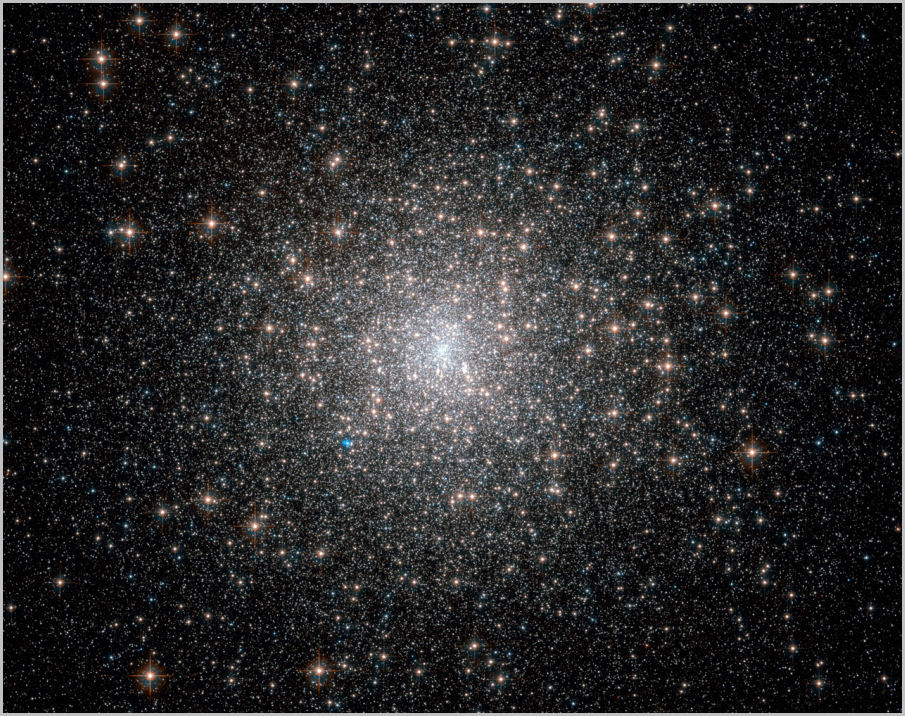
Near the horse's shoulder is the wonderful barred spiral galaxy, NGC 7479. It is 105 million light years away, with an apparent magnitude of 10.9.
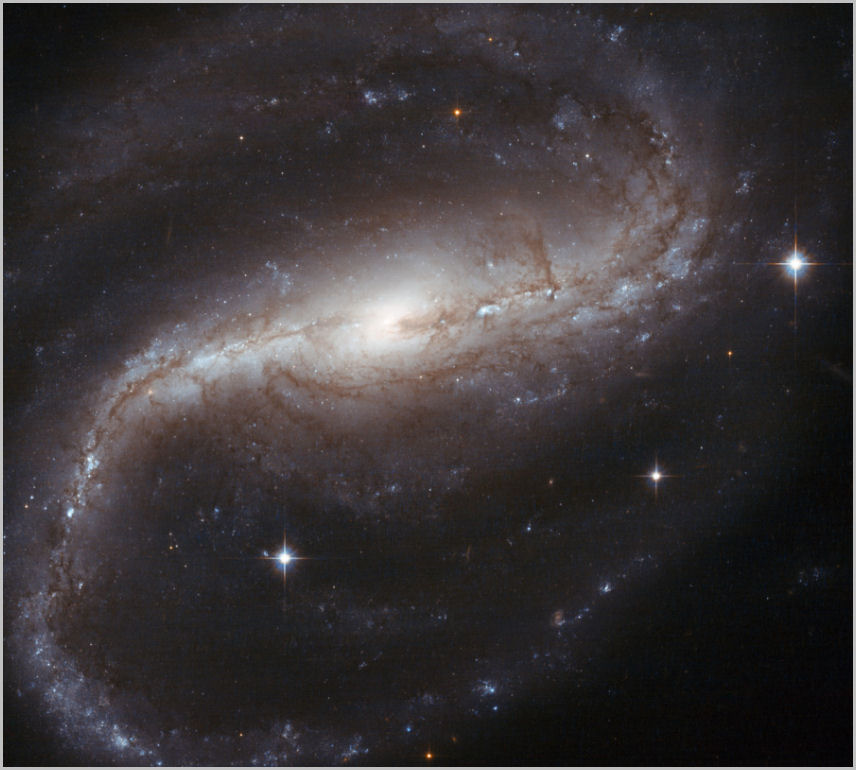
Near the front legs of Pegasus we find the spectacular spiral galaxy NGC 7331. It has an apparent magnitude of 9.5, and is 40 million light years from Earth.
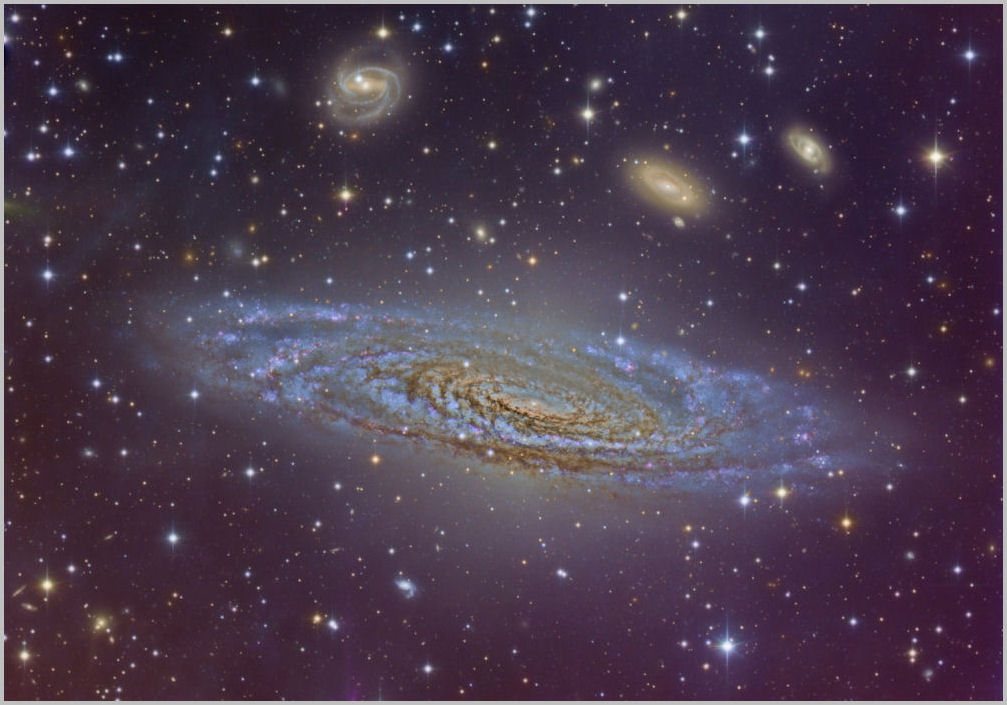
Close by is the even more spectacular galaxy NGC 7217. With an apparent magnitude of 10.1, it is 50 million light years away.
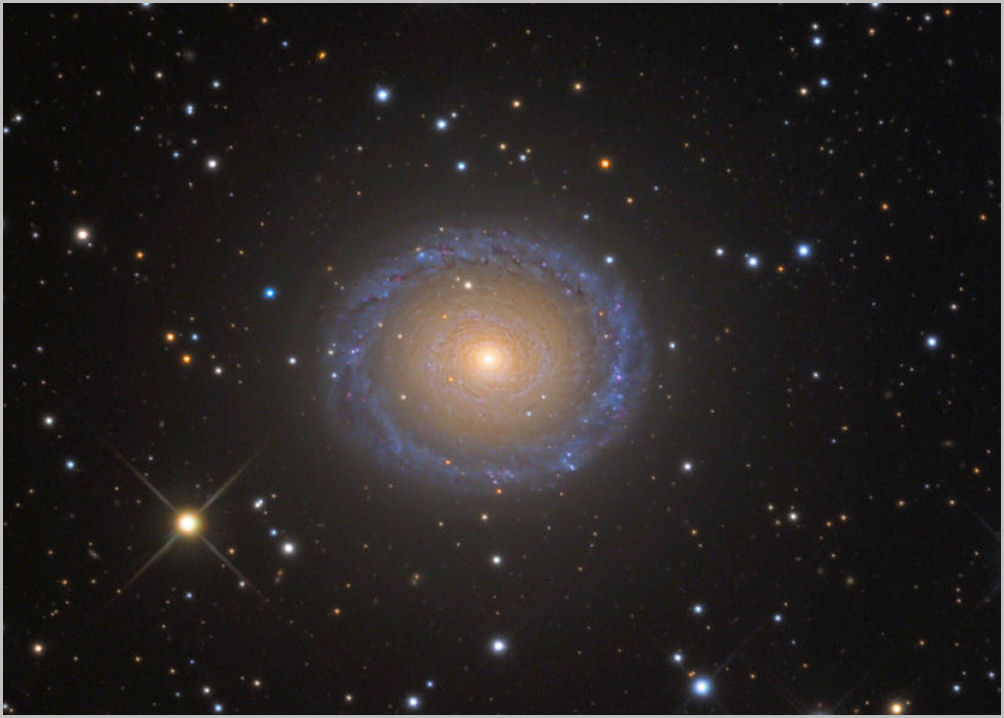
|
|
|
|
|
|